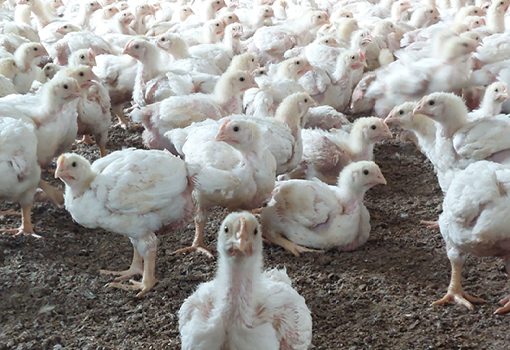Leg problems are prevalent in broiler production. They are also of diverse nature. Regardless of their etiology, they typically affect not only growth performance, but also bird health and welfare. In severe conditions, a good way to illustrate the welfare problem is that affected birds cannot move properly and become unable to meet their basic needs for feed and water. Besides, leg problems are also associated with an increased incidence of slaughterhouse rejections due to more frequent breast blisters or cellulitis.
The optimal management of vitamin and mineral nutrition (e.g., vitamin D, calcium and phosphorus, trace elements) is often the first thing that comes to mind when it comes to broiler leg disorders. Maintaining intestinal health in these situations will play a crucial role in controlling them by contributing to optimal nutrient use.
However, many emerging leg disorders have a non-nutritional origin. They are often related to infections of the nervous system, the joints, or other soft tissues. Infections caused by Enterococcus cecorum fall in this category. They also depict the decisive role intestinal microbial homeostasis plays in maintaining leg health. Let’s see why.

Pathogenecity
Considering the pathogenesis of ES, building a strong intestinal health at chick’s placement is a strategy of choice to prevent outbreaks by preventing early colonization by avian pathogenic E. cecorum, which is a predisposing factor the disease outbreak at later stages.
Antibiotic resistance in Enterococcus spp. is unfortunately not rare. Even when field isolates are sensitive to antibiotics, the time of intervention remains a determining factor for therapy success. Interventions after disease onset do not always stop mortality.
For these reasons, successful field strategies have mostly relied on starting birds with lincomycin and spectinomycin in many countries. However, it must be noted that Enterococcus spp. can also be resistant to lincomycin and spectinomycin. In addition, regulation EU 2019/6 further restricted the ban on the preventive use of antibiotics in groups of animals in the European Union as of 28 January 2022, which increases the need for more sustainable alternatives to control E. cecorumoutbreaks in broiler production.
Prophylactic strategies have proven to outcompete treatments to control ES. As early colonization of the chick gastro-intestinal by avian pathogenic E. cecorum is an important predisposing factor, our approach aims at supporting the establishment of a diverse and resilient microbial environment as early as possible after chicks' placement to prevent undesired colonization.
How?
Scientific research
To evaluate the effect of Bacillus sp PB6 on avian pathogenic E. cecorum, an in vitro study was carried out using 9 clinical strains isolated from lesions during confirmed outbreaks of ES. The cell free supernatant obtained after the culture of Bacillus sp PB6 was incubated with the E. cecorum strains and growth reduction was measured in comparison to a control. Bacillus sp PB6 consistently in inhibited or delayed the growth of all the Enterococcus strains tested during this trial. Combined with its beneficial effects on the intestinal microbiome, these results suggest that CLOSTAT is a promising tool to contribute to the early sustainable prevention of E. cecorum outbreaks in broiler production.
© Kemin Industries, Inc. and its group of companies 2026 all rights reserved. ® ™ Trademarks of Kemin Industries, Inc., USA
Certain statements may not be applicable in all geographical regions. Product labeling and associated claims may differ based upon government requirements.